
The history of the company is characterized by change and the ability of different generations to courageously accept and skilfully shape even far-reaching changes.
When 25-year-old Gustav Adam Schwanhäußer took over a pencil factory founded ten years earlier in 1865, nobody could have imagined that it would grow into a globally successful company. Today, the Schwan-STABILO group of companies is managed by the sixth generation - and generates an annual turnover of around 800 million euros with around 5,300 employees worldwide. (As of 30.06.2024). This makes Schwan-STABILO one of Germany's leading family businesses, which together secure around 60 percent of private-sector jobs.
"We are and will remain a family business," emphasizes Sebastian Schwanhäußer, CEO and executive shareholder of Schwan-STABILO. "No matter what challenges we face - we think in terms of generations, not years." For him, family businesses are characterized by flexibility, quick decisions and personal responsibility. "If we do it right, we are closer and bolder - with our strategy and the way we manage employees and develop products and solutions. We don't jump on every trend, new things have to make sense in the long term."
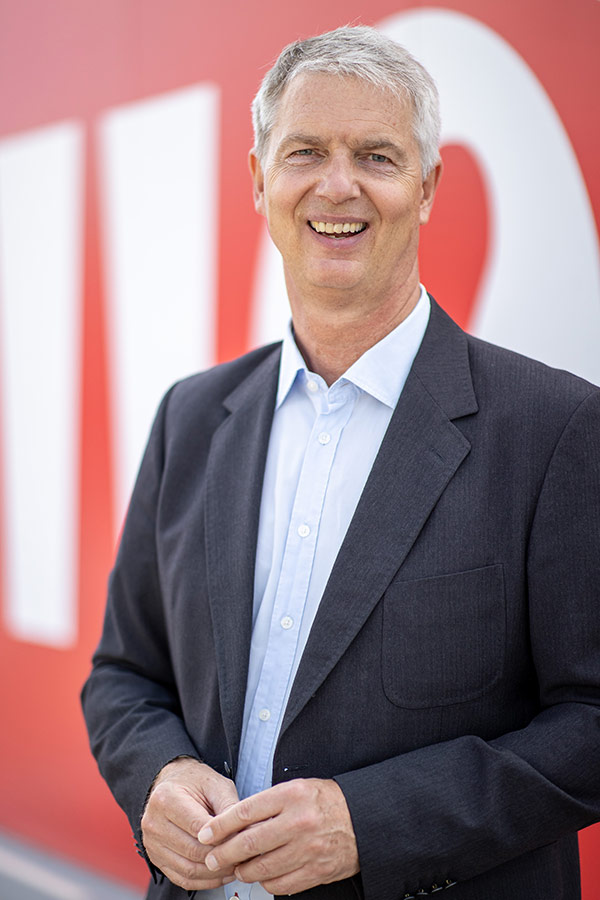

April 2025: Listen to the success story in an interview with Sebastian Schwanhäußer in a contribution from Klassik Radio.
Play directly here:
In 1855, Georg Conrad Großberger and Hermann Christian Kurz received permission from King Maximilian 11 of Bavaria to manufacture pencils. Their business grew rapidly, but they could no longer cope with the many orders. Debts piled up and they asked for a large loan, which they did not receive. Eventually they had to put the factory up for sale. In 1865, Gustav Adam Schwanhäußer bought the Großberger & Kurz pencil factory for 32,000 guilders. Two years earlier, the factory had been valued at 70,000 guilders, so it was a good deal! Gustav modernized the machines, introduced new processes and expanded the product range.
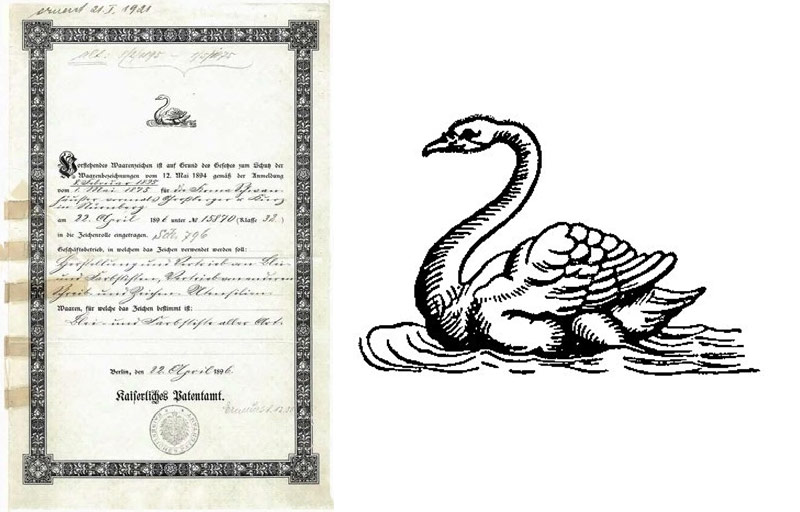
In 1875, Gustav Adam Schwanhäußer chose the swan as the logo for his company, which is still the oldest figurative mark registered with the German Patent and Trademark Office.
In 1875, Gustav Adam Schwanhäußer applied for a patent for colored copying pens, which were available in black, red and blue, putting the then still purple competition in the shade. Suddenly, office work was not only functional, but also colorful!
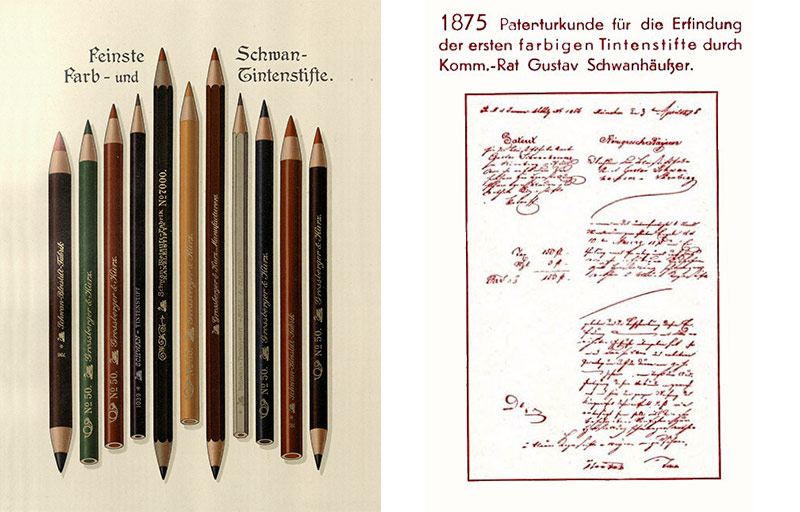
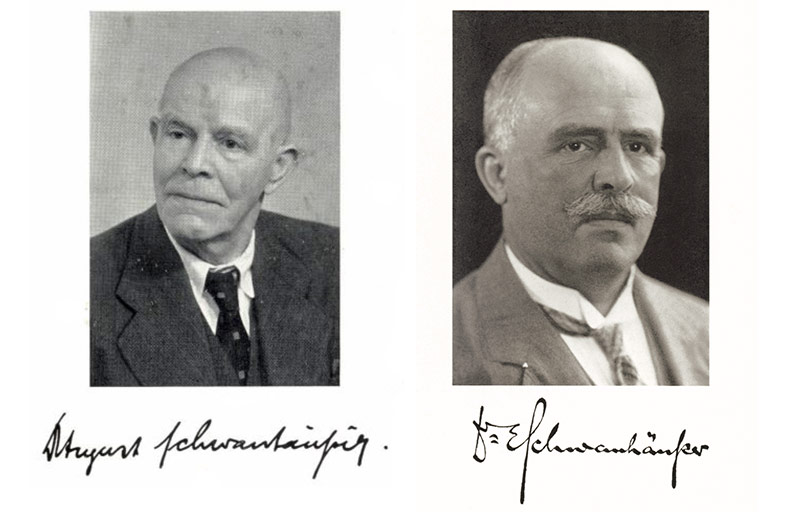
Gustav Adam's eldest son Eduard joined the company in 1893, carrying on the legacy with a doctorate in his pocket and a passion for quality. The younger son, August, a chemist with an eye for detail, ensured technological progress and set new standards. Together, the brothers brought new momentum to the company, which was reflected in rising sales.
At the industrial exhibition in Nuremberg in 1906, the Schwan pencil factory presented a gigantic 30-metre-high pencil surrounded by 12-metre-high No. 270 pencils. This pavilion was designed by Ludwig Ullmann, who was assistant building inspector in Nuremberg from 1898 to 1901. The total cost of the building was 12,821 marks, which was more than the purchase of the new diesel engine the year before.
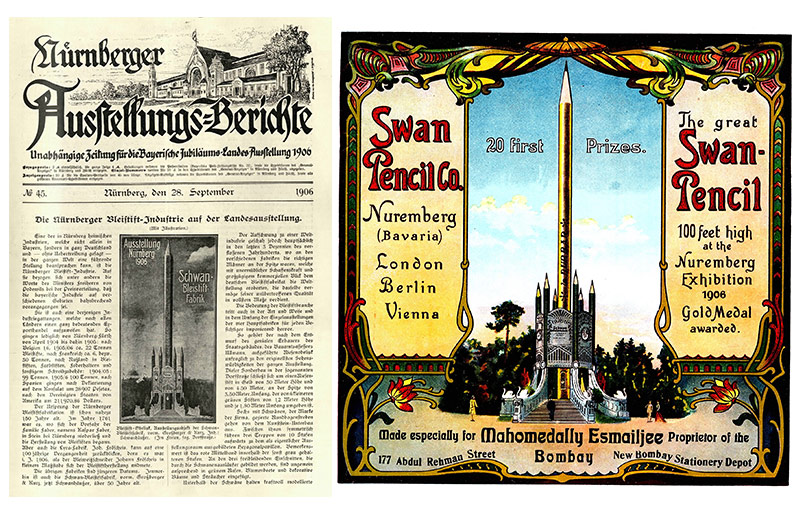
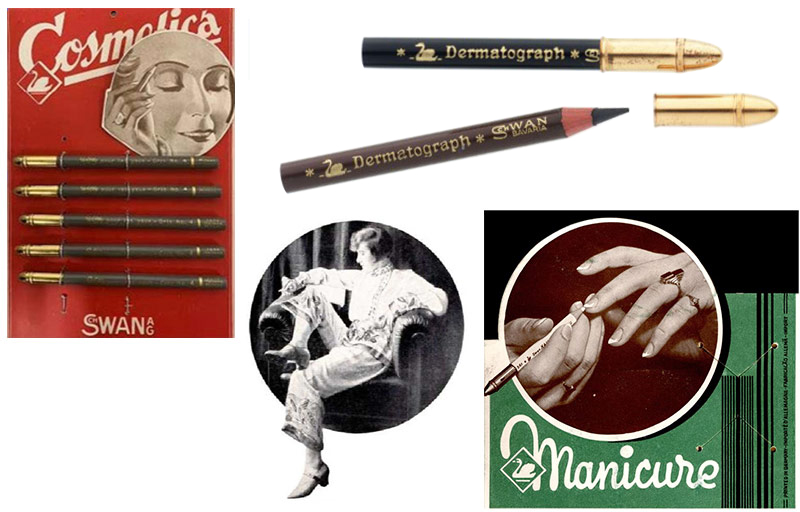
As more and more women in Europe discovered the joy of make-up at the beginning of the 20th , August Schwanhäußer and his son Erich, who was now also working in the company, also demonstrated a true innovative spirit: they recognized the potential of an existing product - the so- called dermatograph, which originally used as a marking pen in medicine. In 1927, they launched it on the market as the first eyebrow pencil - an international success that also attracted customers such as US cosmetics entrepreneur Max Factor was enthusiastic. The company also offered lip liner, kajal and nail whitening pencils.
Between 1924 and 1926, Eduard Schwanhäußer's sons the company: Gustav, Herbert and Waldemar. Erich Schwanhäußer, son of August, joined the family in 1926.
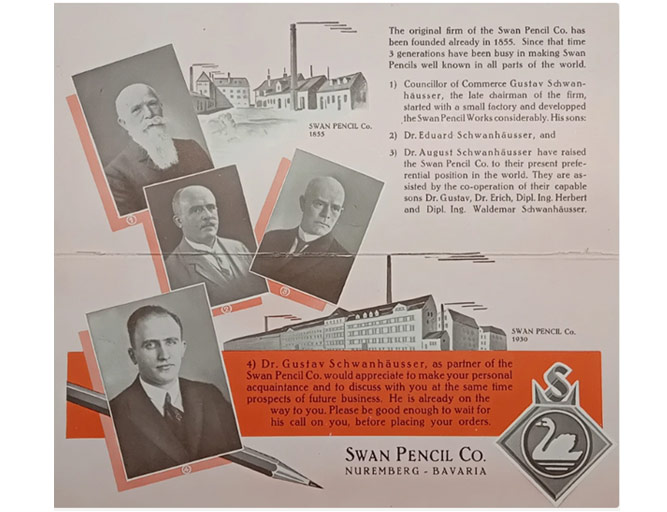
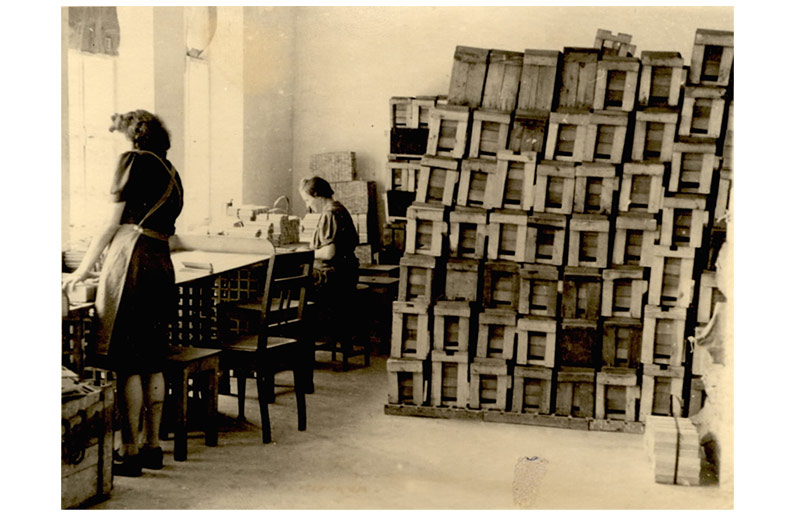
The brothers Eduard and August Schwanhäußer planned to expand the business on a plot of land outside the town, but the start of the First World War put a stop to the project. Exports came to a standstill, raw materials became scarce, many workers were drafted - including Eduard and August. Female staff kept operations running and women also drove the Nuremberg streetcars. The initiative for this came from Eduard Schwanhäußer.
In 1925, Schwan the first thin-core colored pencil on the market, the Schwan Gold STABI LO, which impressed with its stable lead and even wear. It was a real all-rounder and, according to the advertising, was suitable for numerous materials - from silk to leather and wood. And the best thing? Women even painted their legs with it!

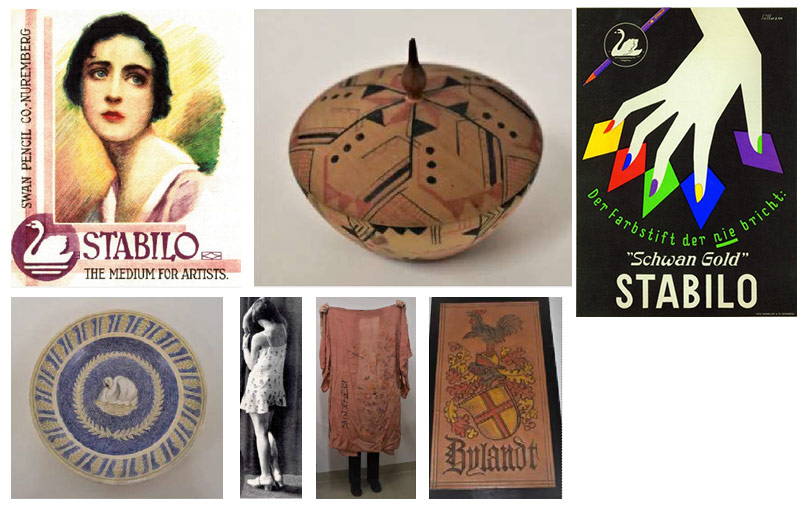
The iconic graphic, a splayed white hand on a dark background with the swan logo, became the brand's distinctive symbol. The slogan "The colored pencil that never breaks Swan Gold STABILO" coined the unmistakable trademark.
The product range was streamlined and in 1932 the three brands STABILO, OTHELLO and SWANO were created. High-quality pens were grouped under STABILO, OTHELLO was recommended for the general public and SWANO became a brand for children.
STABILO as a word mark was first registered wirh German Patent and Trademark Office in 1926. It was then re-registered with the Patent Office in 1939 for a wider range of products.
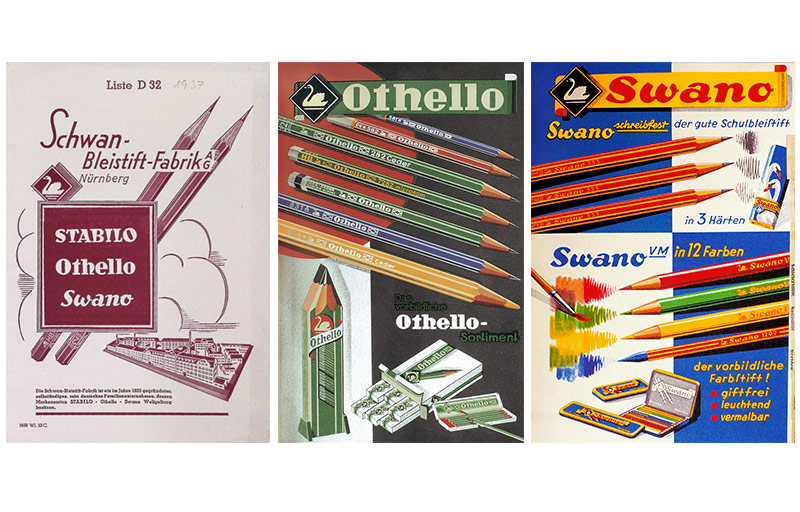

At the end of 1939, employees were drafted into the war and raw materials
became scarce. The factory in Maxfeld was severely damaged by Allied
attacks in 1945.
In the summer of 1945, the employees were already ready: "We've
already brought shovels. Can we start right away?" No sooner said than
done - more than 30 pencil workers laid the foundations for the
reconstruction.
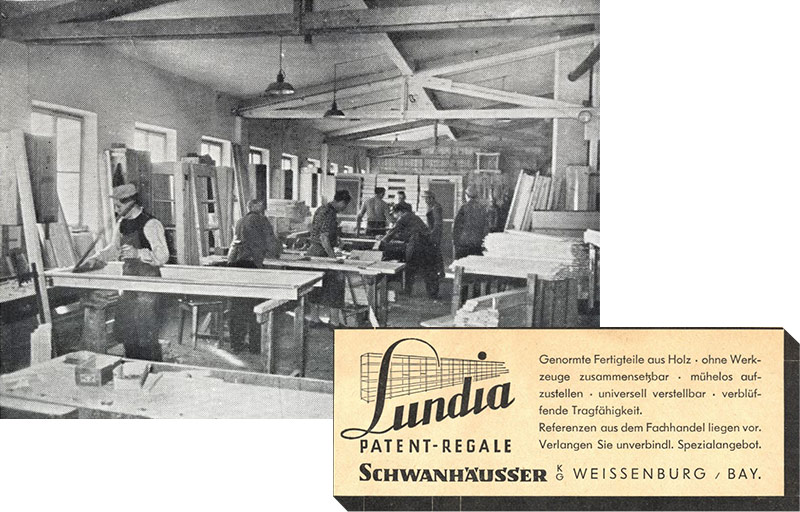
In 1941, the company relocated parts of the wood depot to Weissenburg in an old foundry for fire safety reasons - this gave rise to Schwanhäußer GmbH. Later, stylish Lundia shelves were added to the range! In 1984, however, this came to an end: Focus fully on cosmetics & pens.
Reconstruction of the factory buildings began in the summer of 1945, but the American occupation banned the manufacture of writing instruments. Erich Schwanhäußer once again demonstrated his innovative spirit: instead of stationery, he quickly produced soap, Flora shaving soap, Fortuna skin cream - and the highlight: Lirola, lipstick on a matchstick! The "one-off" lipstick sold well. Since then, the advertising slogan has become legendary: "Lilo and Lola only use Lirola"
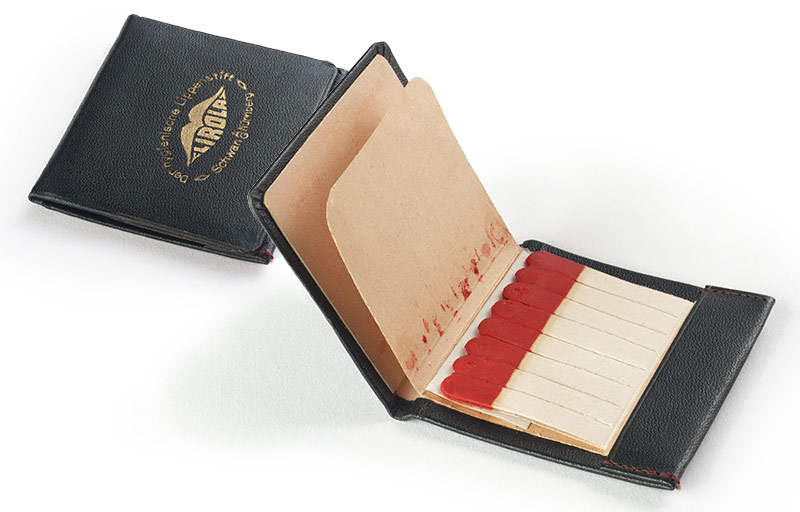
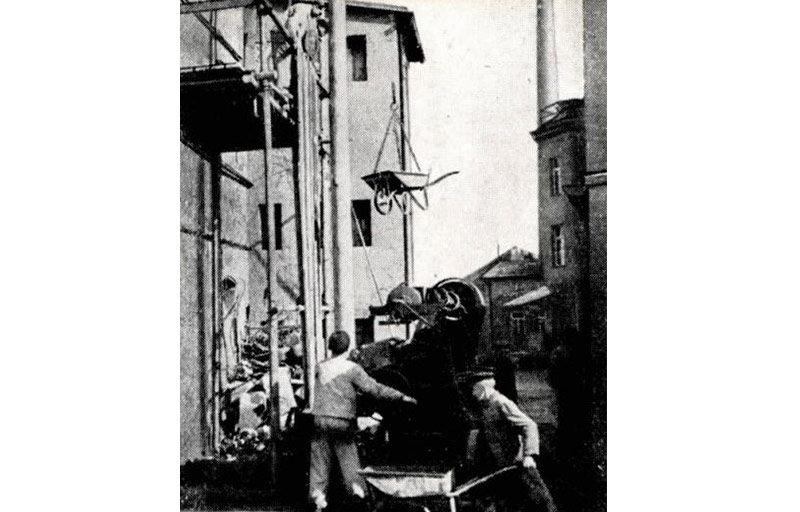
Production at competitors Faber and Staedtler continued at full speed, as they had not suffered any war damage. However, one of these competitors then ran out of coal. Erich Schwanhäußer recalls the following: "One day, the company's buyer came to me in the factory. He said [...] that the coal had been confiscated from us, they would need it [...]. I said: "You're wrong, we're going to build and we definitely need coal. How are you going to pay me for them?" The answer: "At the fixed price in Reichsmarks". I said, "I can't do anything with that price these days either, I'll make you another suggestion, make pens for us and you'll get the same amount of coal." He refused and didn't come back when I showed him where the "door" was."
Günter Schwanhäußer, eldest son of Dr. Gustav Schwanhäußer, joins the company in 1950. He travels around the world as a sales representative and acquires new customers. From 1953 to 1955, his path takes him to Asia. The media report on a "two-meter European in Indian surroundings: Günter Schwanhäußer on the streets of Bombay."
In the course of his professional career, he provided important impetus for the company.


Schwan-STABILO's 100th anniversary celebration in the exhibition hall in Nuremberg had a lot to offer: Dr. Gustav Schwanhäußer gave a speech, and the stage was adorned with a 12-meter swan logo. A world map was set up underneath, on which 120 small lamps indicated the swan representations around the world. During the celebration, a play was performed, a ballet danced and two orchestras played. There were numerous reports in the press about the Swan anniversary.
Schwan-STABILO was the first German company to set up a joint venture with Malaysia. What began in Johor Bahru in a small factory with an attached store and a workforce of 20 people developed into an important location for STABILO on the Asian market to this day.
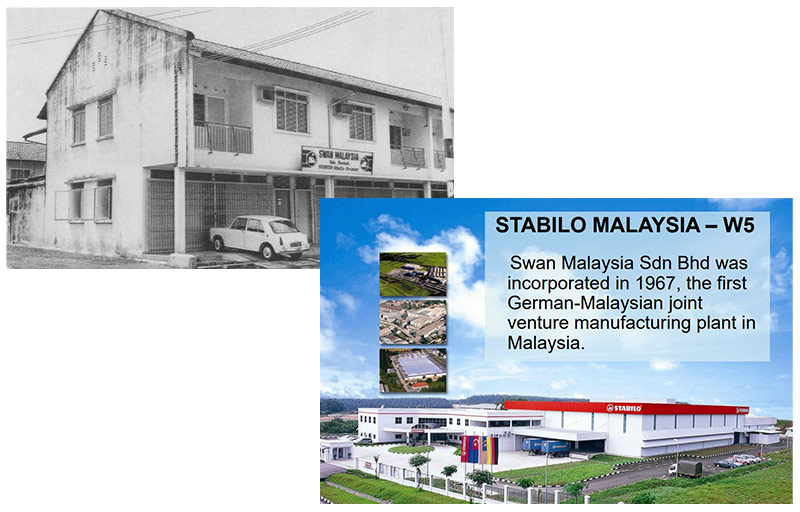
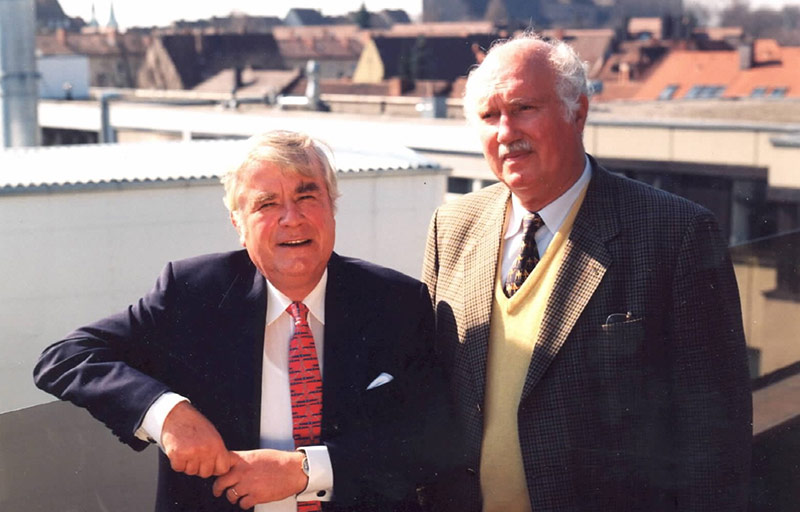
After the retirement of the third generation, Günter Schwanhäußer took over the management of the company together with his cousin Horst Schwanhäußer in 1969. They shaped the company with vision and commitment from the 1970s until the mid to late 1990s.
Horst Schwanhäußer completed a degree in business administration, which he supplemented with stays abroad in Spain and France. After holding various professional positions, including at IBM, he joined the family business in 1968. There he played a key role in the development and expansion of the cosmetics division to its current importance as a global player until the 1990s.
Günter Schwanhäußer (father of the current CEO Sebastian Schwanhäußer) graduated from agricultural college and joined the family business at the age of 22. He initially built up the sales department at the Weißenburg timber plant before moving to the STABILO sales force. His biggest coup was the STABILO BOSS highlighter.
In 1956, STABILO launched a real innovation with the Carb-Othello: a colored charcoal pencil that was characterized by soft, even strokes, good smudge resistance and rich colors - available in 48 lightfast shades, wood-cased or as a square chalk. The product description did not promise too much: "Softer than any other colored pencil, break-resistant like a graphite pencil, strong colors like tempera." Another new product was the All STABILO, a versatile pencil that could write on paper, plastic, metal, lacquer, foil, photos and even under water. Our classic STABILO Pen 68 went on sale in 1966; the colors could be painted with a brush. It is still one of our bestsellers today. Originally, the pens were sold in metal cases with 5 or 10 colors. In the meantime, the color palette has been expanded to 65 colors.
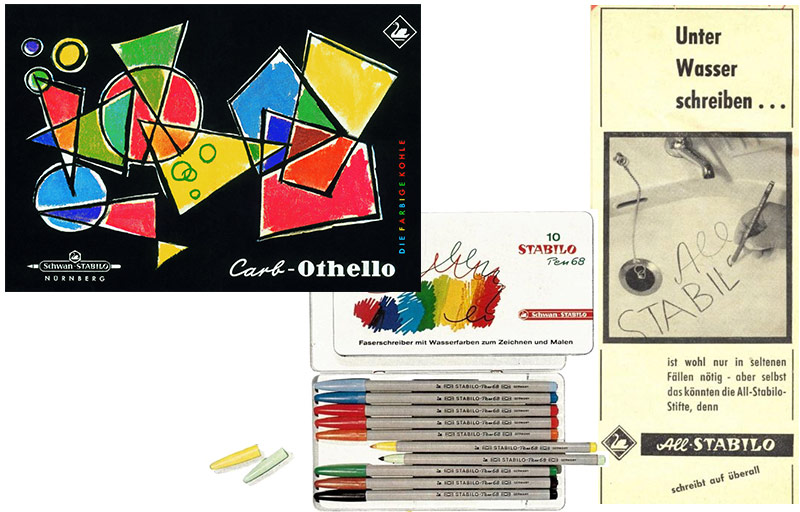
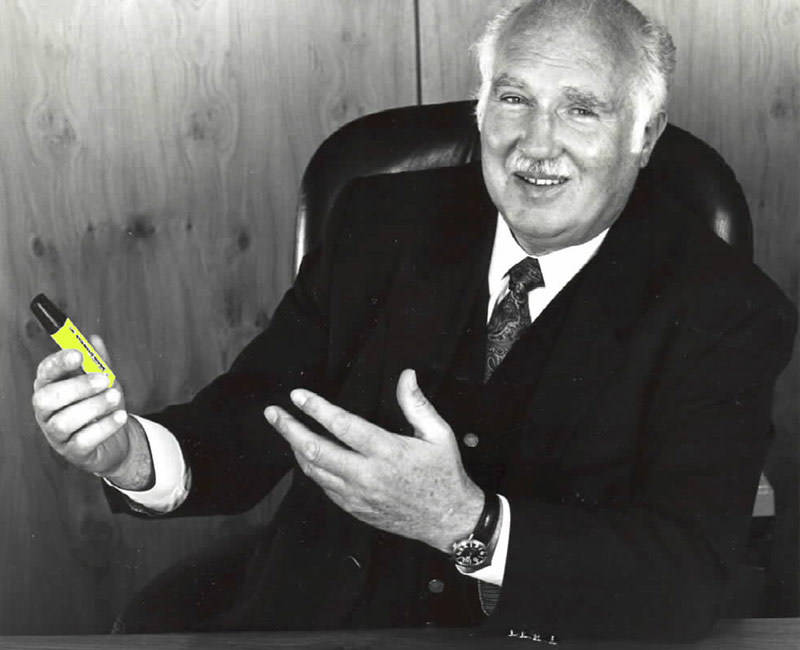
Günter Schwanhäußer took a trip to the USA and observed how American students used a pen to highlight important text passages in color. The product was not yet really ready for the market. When he arrived in Nuremberg, Günter did everything he could to eliminate the existing functional and visual defects. The product designers molded several drafts out of plasticine, but they were not satisfactory. Exasperated, someone from the team hit one of the models with the flat of their hand - and lo and behold - the typical appearance of the STABILO BOSS was born. It came onto the market in 1971. Schwanhäußer personally drew attention to this new product with extraordinary marketing campaigns: the highlighter was sent to 1000 opinion leaders. For example, to company owners, professors and politicians. In his letter, Günter Schwanhäußer assured them: "This highlighter helps to simplify your work, frees up valuable time for more important things and therefore belongs on every desk."
Advertising for the STABILO BOSS highlighter:
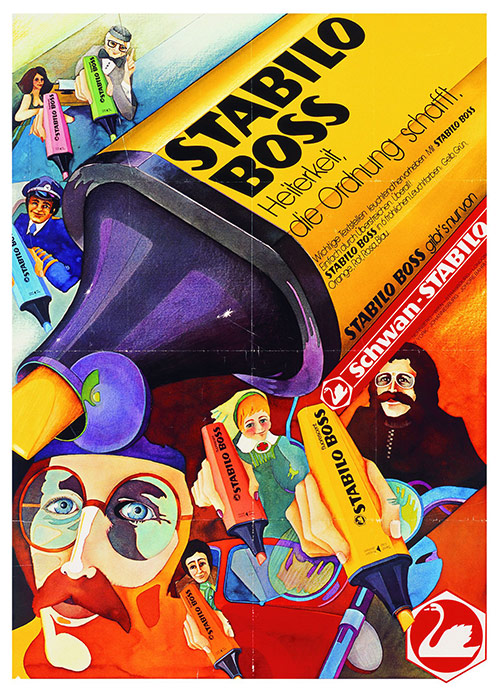

The orange and white striped Point 88 ink pen was launched in 1977 and has been an integral part of pencil cases ever since. Compared to ballpoint pens or fountain pens, it did not spill, smear or leak ink. Thanks to its design, it sat comfortably in the hand and took up less space in the pencil case. Thanks to its low price, the Point 88 was particularly attractive for bulk users such as schools or offices. It was also described by FAZ editor and author Florian Illies in his book Generation Golf (2000) as a symbol of an entire generation of young people - the consumer-oriented and tech-savvy middle class that grew up in the 1980s and 1990s.

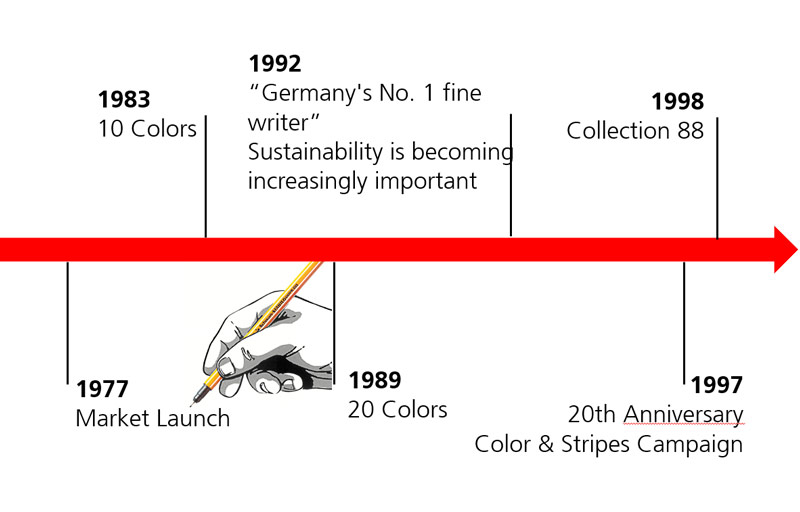
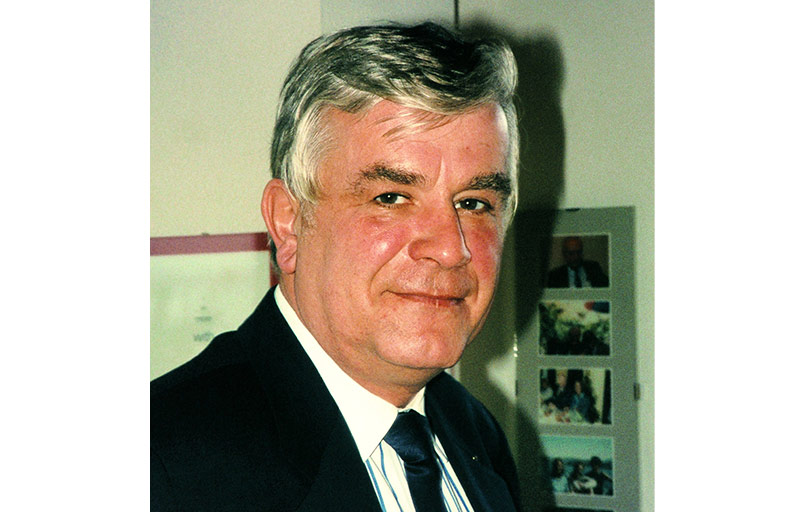
With a clear eye for opportunities and a deep understanding of customer needs, Horst Schwanhäußer increasingly focused the family business on expanding two central areas from the 1970s onwards: Brand advertising and, above all, cosmetics. He was always guided by the principle "Customer First". For him, personal relationships with customers were not an obligation, but a conviction - every conversation was prepared down to the last detail, every visit was planned individually. His guiding principle "You have to know the customer personally" not only shaped his management style, but also the corporate culture. A picture hung in his office with the inscription: "You always do better with a smile" - a sentence that perfectly reflects his attitude towards customers and employees alike.
In the cosmetics sector, he focused early on innovative products and individual customer solutions - an approach that made Schwan Cosmetics the global market leader under his leadership. With a keen sense for trends, team spirit and constant innovation, he developed a business segment that today reaches millions of consumers worldwide. In 1995, following the retirement of his cousin Günter Schwanhäußer, he temporarily took over the sole management of the family business. In 1999, Horst Schwanhäußer went into well-deserved retirement - but left behind a company that is still characterized by his values today.
In July 1999, a new era began at Schwan-STABILO: for the first time in the company's history, the operational business was no longer managed directly by a member of the Schwanhäußer family. Instead, two long-standing family confidants with extensive experience and deep ties to the company took over the management - Ulrich Griebel and Wolfgang Handt. Ulrich Griebel, a qualified engineer, joined Schwan-STABILO in 1988 after working for several years as a consultant for production systems in the USA. Within a very short time, he took on management responsibility and was appointed to the management board after just four years. Following the restructuring of the holding company in 1996, he took over the management of the Cosmetics subgroup. One of his main achievements was the introduction of the fractal organization in cosmetics production - a flexible, decentralized production model that allowed Schwan Cosmetics to set new standards in manufacturing. Wolfgang Handt was also a permanent fixture in the company. After studying business administration in Cape Town and London, he joined Schwan-STABILO in 1979, initially as head of finance and accounting. In 1996, he took over the management of the Corporate Services division in the holding company and was responsible for central administration and support functions.
With this dual leadership, Schwan-STABILO ensured continuity in the corporate philosophy - even without a family member at the operational helm. The corporate values were retained, while fresh impetus set the course for the future.
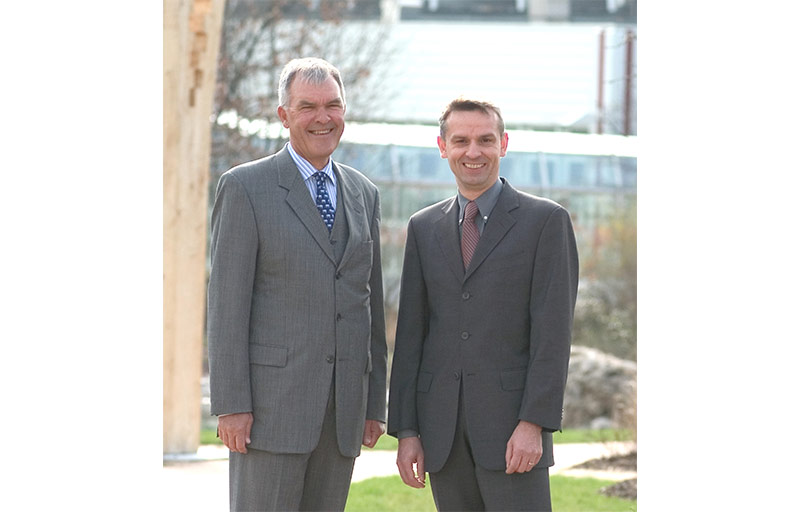
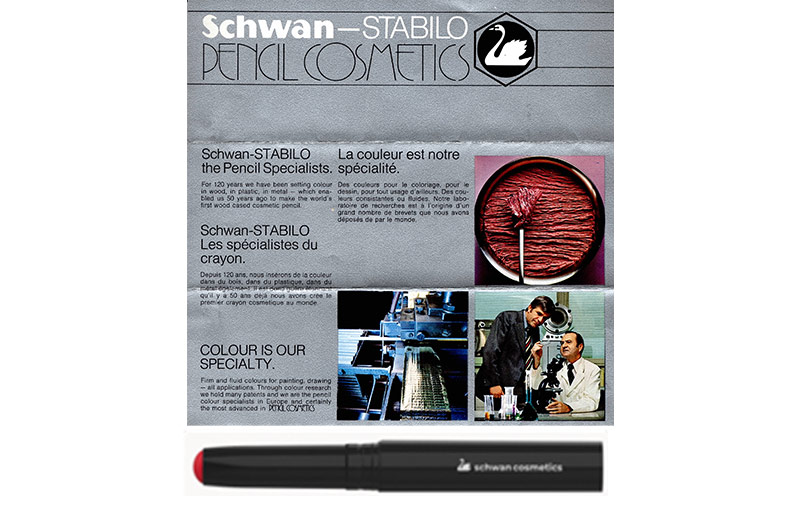
During a trip to Italy in the 1970s, Horst Schwanhäußer discovered a cosmetic pencil with a particularly thick lead - ideal for applying make-up to large areas. Inspired by the idea, Schwan-STABILO developed a new process in 1972 that made soft leads usable for cosmetic applications for the first time - the later successful product Jumbo MATIC. The cosmetics division grew rapidly: as early as 1980, over 2,000 individual shades were created - tailored to customer requirements. With the move to Heroldsberg in 1995, the division was further expanded and professionalized. As an innovation leader, Schwan Cosmetics developed, among other things, twist-mechanism contour pencils in the 1970s and liquid eyeliners in the 1990s - developments that continue to set standards in the industry today. Today, Schwan Cosmetics is one of the world's leading manufacturers in the private label sector of decorative cosmetics - from lip and eye products to contour products. Around two million pencils leave the factories every day and go to almost all major cosmetics brands worldwide.
For over 140 years, Schwan-STABILO's headquarters were in the heart of Nuremberg - directly behind the Imperial Castle. After being destroyed in the Second World War, the site on Maxfeldstrasse was rebuilt and continuously expanded over the decades. But in the 1990s, the company reached its spatial limits. The traditional site could no longer meet the company's growing requirements - a new location was needed. The choice fell on a 74,000 square meter site in Heroldsberg, just outside Nuremberg. Within just 14 months, a modern administration building for all business divisions and a modern cosmetics production facility were built on the site - an investment of around 60 million Deutschmarks. 1995 began.
The big move: around 20,000 boxes were transported in several stages from the old site in Maxfeldstrasse to the new location - Schwanweg 1😉 ! Around 1,100 employees found their new Schwan home here - a significant step into the future, not only in terms of space, but also symbolizing the company's emergence as a global player.
Inauguration 1995

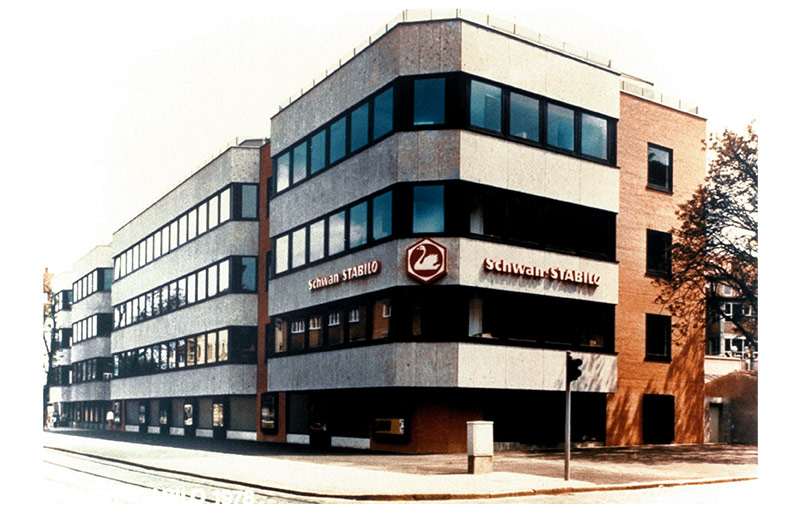
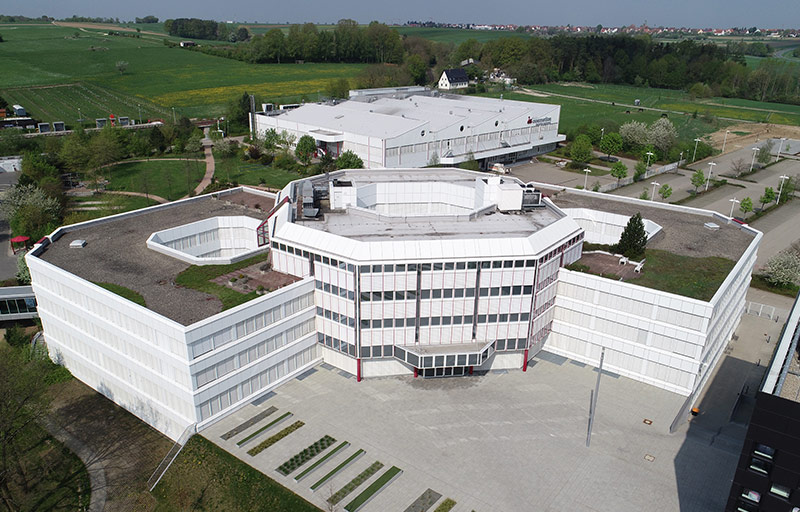
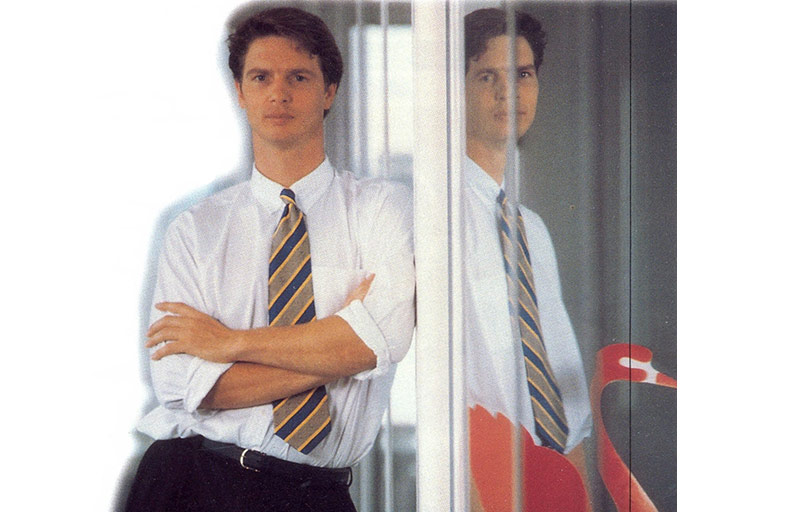
Sebastian Schwanhäußer got his first taste of the company back in the 1980s - as a vacation jobber in production at the Weißenburg site. After studying business administration at the Friedrich Alexander University of Erlangen-Nuremberg and working in Germany and the USA, he joined the family business in 1997 as Key Account and Marketing Manager at STABILO. Just one year later, he took over as Head of Sales and was appointed Managing Director of STABILO International GmbH in August 1998. With a fresh perspective and international experience, he drove forward the global orientation of the brand - in particular the positioning of STABILO as an expert in all aspects of learning to write.
The next milestone followed in 2006: Sebastian Schwanhäußer was appointed to the Group Management Board and finally took over the position of CEO of the entire Schwan-STABILO Group in 2019. Under his leadership, the company continued to grow strategically, including through investments in new markets, digitalization and the sustainability strategy. The development of the third business division "Outdoor", which includes brands such as deuter, Ortovox and Maier Sports, was also particularly influential.
After almost three decades in the operational business, Sebastian Schwanhäußer will take over as Chairman of the Advisory Board on July 1, 2025 and pass on the operational management.